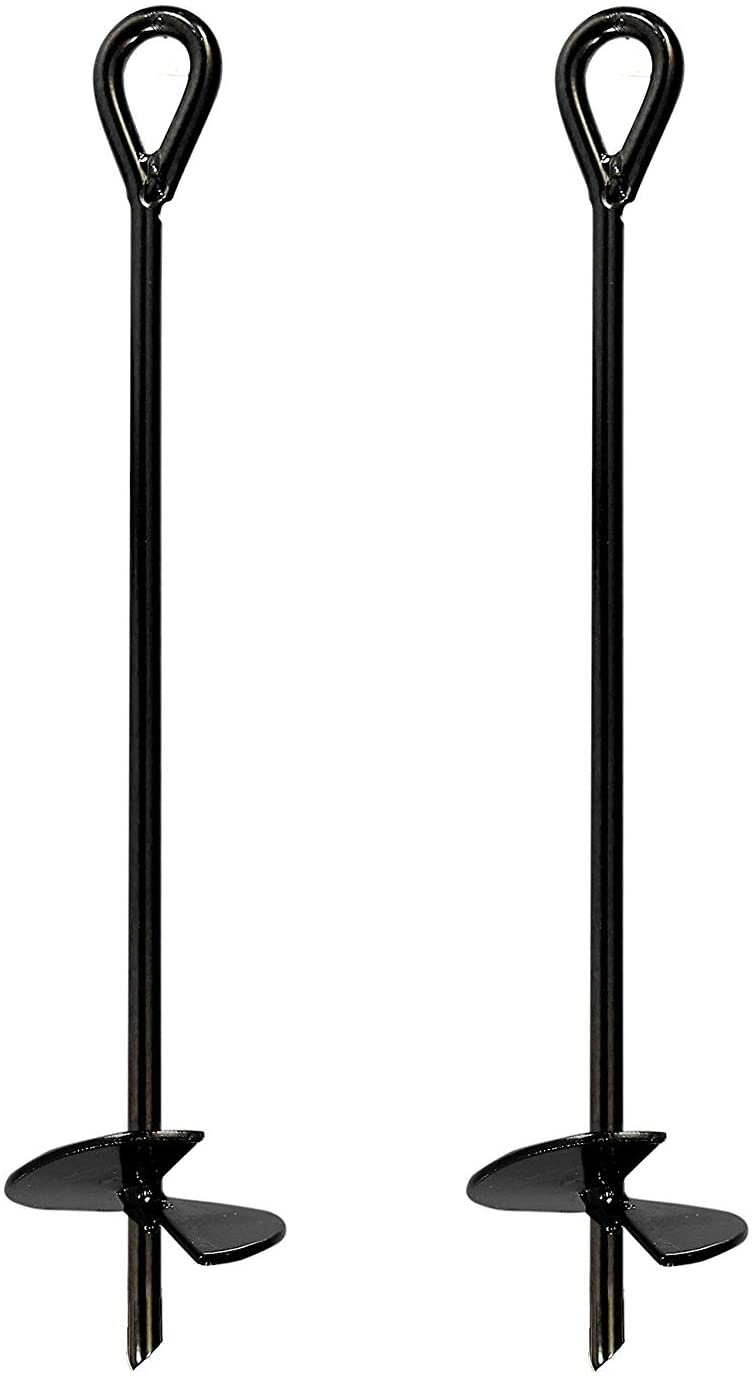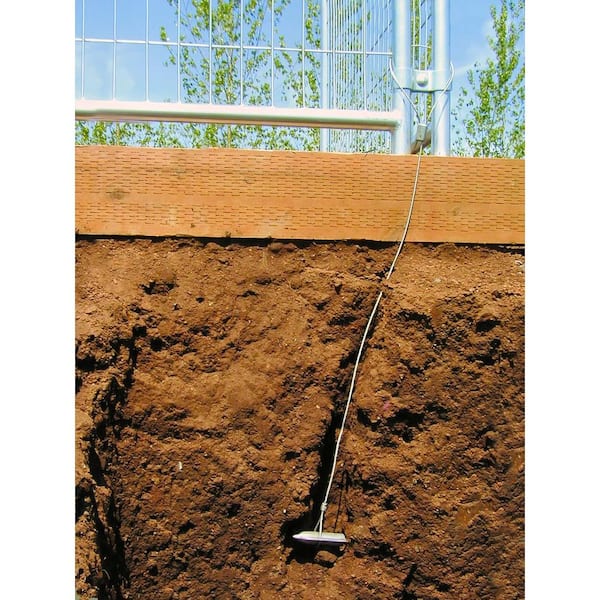Learning About the Importance of a Ground Anchor in Safeguarding Heavy Loads
Learning About the Importance of a Ground Anchor in Safeguarding Heavy Loads
Blog Article
Explore the Various Kinds of Ground Anchor for Your Following Project
When starting a building and construction or landscaping job, recognizing the numerous kinds of ground supports available is critical to making sure both stability and sturdiness (Ground Anchor). From auger supports, which stand out in diverse soil conditions, to stake supports created for momentary installations, the alternatives are countless. Additionally, concrete and screw anchors present special advantages in particular scenarios, while deadman anchors are customized for applications needing resistance to side forces. The choice of a proper support type can considerably influence the general success of your task, prompting additional expedition right into their respective benefits and applications.

Auger Anchors
Auger supports are a prominent choice in numerous construction and landscape design tasks due to their one-of-a-kind layout and efficient securing abilities. These supports include a helical screw-like shaft that is driven right into the ground, enabling a steady and safe hold. The spiral style promotes easy installation and optimizes resistance versus side forces, making auger supports specifically reliable in applications such as fence, momentary structures, and erosion control.
The setup process of auger anchors is relatively straightforward. They can be by hand or mechanically set up, relying on the dimension and required depth. This adaptability permits their usage in varied soil conditions, from sandy to clayey terrains. Furthermore, auger supports can be conveniently gotten rid of and reused, which adds to their cost-effectiveness and sustainability.
Among the substantial benefits of auger supports is their capacity to disperse tons evenly throughout the bordering soil, lowering the risk of dirt disturbance and decreasing ecological effect. Furthermore, they are much less susceptible to heaving or loosening up in time contrasted to standard securing techniques. Subsequently, auger anchors are an excellent choice for jobs requiring sturdy and reputable anchoring solutions.

Stake Anchors
When it comes to safeguarding structures in a range of exterior applications, stake supports offer a straightforward and dependable service. These supports are typically constructed from sturdy products such as steel or aluminum, made to hold up against environmental stresses while providing ideal stability. Their straightforward layout permits for quick setup, making them an ideal choice for temporary or permanent anchoring demands.
Risk supports are particularly beneficial in protecting tents, covers, and other light-weight structures against wind and weather condition. They function by being driven right into the ground at an angle, creating a strong hold that stands up to pull-out forces - Ground Anchor. The efficiency of stake supports relies on numerous elements, including dirt type, moisture web content, and the angle of installation
For included protection, several risk supports feature add-on factors for straps or ropes, enabling for stress changes as essential. In applications such as landscaping or building, they can efficiently stabilize devices or frameworks on irregular surface. On the whole, stake anchors give a cost-effective and functional option for protecting various exterior installments, making them a recommended selection for specialists and DIY fanatics alike.
Concrete Anchors
Concrete anchors give a durable remedy for securing structures to concrete surface areas, ensuring stability and safety in different applications. These anchors are important for tasks varying from household building and constructions to large commercial setups. They come in different types, consisting of expansion supports, sticky why not look here supports, and undercut supports, each made for particular lots requirements and ecological conditions.
Development supports depend on mechanical devices to grasp the concrete when mounted. They are optimal for tool to heavy-duty applications. Adhesive supports utilize high-strength epoxy or resin to bond the support to the concrete, providing exceptional load-bearing abilities, particularly in fractured concrete circumstances. Undercut anchors create an one-of-a-kind shape within the concrete, giving outstanding holding power, particularly in applications where tensile loads are common.
When executed appropriately, concrete anchors significantly boost the architectural honesty of numerous tasks, making them essential in modern-day building and construction practices. Recognizing the specific requirements of your job will certainly help in selecting the best kind of concrete support for the job.
Screw Anchors

Screw anchors are find more information a flexible securing remedy that can be successfully used in a variety of applications where traditional concrete supports might not be sufficient. These anchors contain a helical design that enables them to be conveniently driven into the ground, making them optimal for usage in dirt and various other substratums. Their one-of-a-kind structure gives exceptional holding power and resistance to pull-out forces, making them suitable for countless tasks, from landscaping to architectural assistance.
Among the key advantages of screw anchors is their ease of setup. They require minimal equipment and can frequently be set up without the requirement for excavation, which saves both time and labor costs. Furthermore, screw anchors can be gotten rid of and reused, providing a lasting remedy for momentary applications.
Screw supports are particularly beneficial in areas where dirt problems are testing, such as loosened or sandy soils. Their capacity to be set up at differing midsts enables modification based on specific project demands. In general, screw anchors provide a reputable and effective securing approach, making them an outstanding option for designers and specialists looking for reliable remedies for their jobs.
Deadman Anchors
Deadman supports act as a durable solution for maintaining structures in challenging problems, particularly where conventional anchoring methods may fail. These supports include huge, heavy objects hidden underground, which create resistance versus lateral forces. The style usually includes a straight element, such as a block of concrete or a steel plate, hidden in the dirt, to which cable televisions or bands are affixed.
The effectiveness of deadman supports depends on their capacity to disperse tons over a larger location, lowering the threat of failure in unpredictable soil problems. They are especially helpful in applications such as retaining wall surfaces, short-lived frameworks, and incline stabilization, where dirt movement can compromise the stability of the structure.
Setup of deadman supports requires mindful preparation to guarantee they are positioned at the proper depth and positioning, maximizing their load-bearing capability. While they might require more labor and material than lightweight anchors, their dependability in negative problems makes them indispensable for long-lasting projects. Moreover, deadman anchors are functional and can be adapted to different applications, making them a go-to selection for engineers dealing with one-of-a-kind obstacles in their tasks.
Final Thought
Auger anchors stand out in diverse soil conditions, while risk supports match temporary applications. For concrete surfaces, development and glue anchors supply trusted alternatives, and screw supports offer convenience in challenging weblink terrains.
Furthermore, concrete and screw supports present special advantages in details scenarios, while deadman anchors are tailored for applications calling for resistance to lateral forces - Ground Anchor.Auger anchors are a preferred choice in various building and construction and landscape design jobs due to their distinct design and reliable securing capabilities. They come in various kinds, including development supports, adhesive supports, and undercut anchors, each made for details tons requirements and environmental conditions
Glue supports use high-strength epoxy or resin to bond the support to the concrete, providing exceptional load-bearing capacities, particularly in split concrete scenarios. On the whole, screw supports supply a effective and dependable securing method, making them a superb selection for specialists and engineers seeking effective options for their tasks.
Report this page